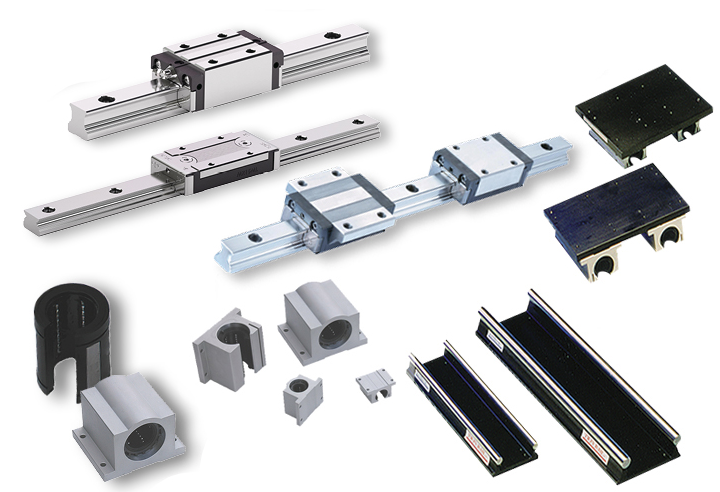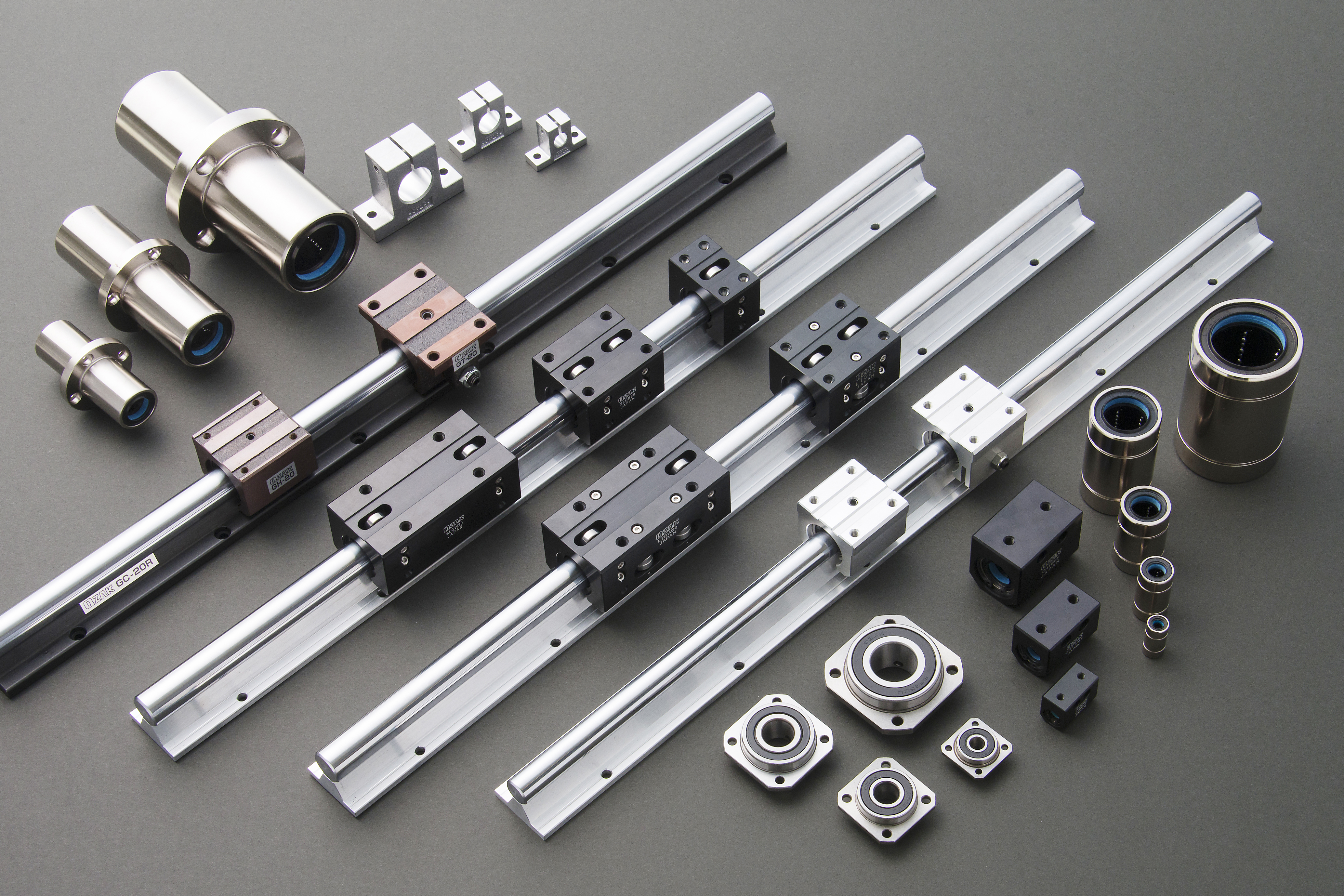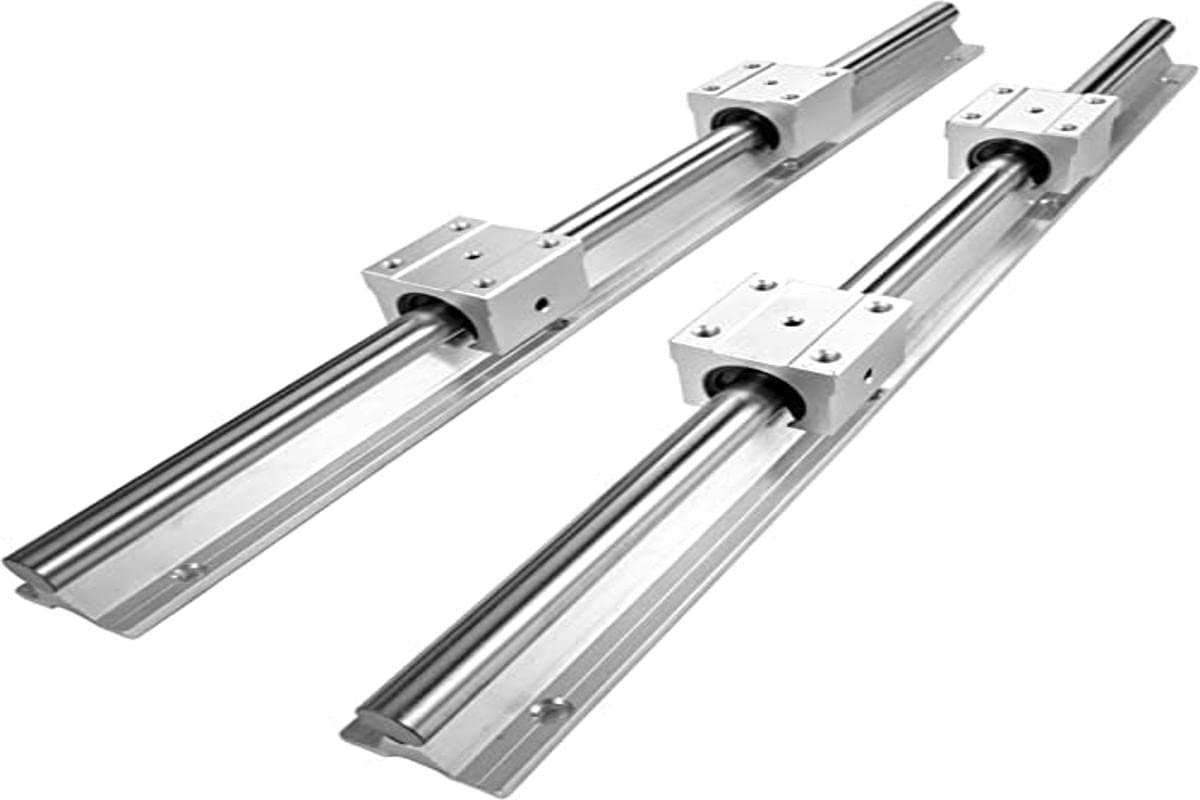
Challenges and Solutions for Addressing Friction and Wear in Linear Bearings
Friction and wear are common challenges in linear bearings that can impact their performance and lifespan. Here are the challenges and some solutions to address them:
- 1. Challenge: Friction:
Friction between the bearing components can lead to increased energy consumption, heat generation, and reduced efficiency.
- Solution: Lubrication:
Proper lubrication is essential to minimize friction. Lubricants reduce the contact between moving parts, allowing smoother motion and reducing wear. Choosing the right lubricant and applying it correctly can significantly mitigate friction-related issues.
- 2. Challenge: Wear:
Continuous movement can lead to wear on the bearing surfaces, affecting precision and performance over time.
- Solution: Regular Maintenance:
Implementing a regular maintenance schedule can help monitor wear and replace worn components before they compromise performance. This includes cleaning, re-lubrication, and periodic inspection of the bearing’s condition.
- 3. Challenge: Contaminants:
Dust, debris, and foreign particles can enter the bearing system, leading to increased friction and accelerated wear.
- Solution: Sealing and Protection:
Using seals, covers, or protective enclosures can help prevent contaminants from entering the bearing system. These protective measures maintain the integrity of the lubricant and extend the bearing’s lifespan.
- 4. Challenge: Improper Installation:
If linear bearings are not installed correctly, misalignment and uneven load distribution can contribute to friction and wear.
- Solution: Precise Installation:
Follow manufacturer guidelines for proper installation, ensuring accurate alignment and even load distribution. This reduces the risk of premature wear and ensures optimal performance.
- 5. Challenge: Inadequate Lubrication:
If the linear bearings are under-lubricated or over-lubricated, it can lead to increased friction and wear.
- Solution: Lubrication Management:
Monitor and manage lubrication levels to ensure they are within the recommended range. Regularly assess the lubricant’s condition and replenish as needed to maintain optimal performance.
- 6. Challenge: High Loads and Speeds:
High loads and speeds can increase friction and wear on linear bearings.
- Solution: Proper Selection:
Select linear bearings that are designed to handle the specific loads and speeds of the application. This ensures that the bearings can operate effectively under the given conditions.
Addressing friction and wear challenges in linear bearings requires a combination of proper maintenance practices, appropriate lubrication, protective measures, and careful selection of bearings. By implementing these solutions, the performance and longevity of linear bearings can be optimized.

Enhancing 3D Printers and Additive Manufacturing with Linear Bearings
Linear bearings play a crucial role in the efficient and precise operation of 3D printers and additive manufacturing processes. Here’s how they contribute to these technologies:
- Precise Motion Control:
Linear bearings provide smooth and accurate linear motion control, ensuring precise positioning of the print head or build platform. This precision is essential for creating intricate and detailed 3D printed objects.
- High Repeatability:
Linear bearings offer high repeatability, enabling the printer to consistently recreate complex geometries layer by layer. This is crucial for producing parts with consistent quality and dimensions.
- Reduced Vibration and Wobble:
The smooth motion provided by linear bearings minimizes vibrations and wobbling during printing, leading to smoother surface finishes and improved print quality.
- High-Speed Printing:
Linear bearings can handle high speeds, allowing 3D printers to operate at faster print speeds without sacrificing accuracy. This is beneficial for reducing overall print time.
- Compact Design:
Many linear bearings have a compact and space-efficient design, which is important for fitting within the confined spaces of 3D printers while maintaining the required range of motion.
- Low Friction and Wear:
Linear bearings are designed to minimize friction and wear, leading to longer lifespan and reduced maintenance requirements. This is especially important in additive manufacturing where continuous operation is desired.
- Smooth Layer-by-Layer Building:
In additive manufacturing, linear bearings enable precise movement of the build platform or print head, ensuring that each layer is accurately aligned and built upon the previous layer.
- Complex Geometries:
Linear bearings enable 3D printers to create complex and intricate geometries that require precise control over the movement of the print head and build platform.
Overall, linear bearings contribute to the success of 3D printing and additive manufacturing by providing the necessary motion control, precision, and reliability needed to create high-quality and intricate 3D printed objects.

Advantages of Linear Bearings over Other Bearing Types
Linear bearings offer several distinct advantages when compared to other types of bearings, particularly in applications that require controlled linear motion. These benefits contribute to their widespread use across various industries:
- Precise Linear Motion:
Linear bearings are designed specifically for linear motion, providing accurate and controlled movement along a defined path. This precision is essential in applications that demand accurate positioning and repeatability.
- Low Friction:
Linear bearings are designed to minimize friction during motion. The reduced friction translates to smoother movement, reduced wear, and improved efficiency, making them suitable for applications requiring consistent motion.
- High Load Capacity:
Linear bearings can handle significant loads in both radial and axial directions. This capability allows them to support heavy components and maintain stability under various loads.
- Minimal Maintenance:
Due to their design and minimal contact between moving parts, linear bearings require less maintenance compared to other types of bearings. This is particularly advantageous in hard-to-reach or inaccessible areas.
- Guided Motion:
Linear bearings provide guided and constrained motion along a single axis. This guidance eliminates the need for complex guiding mechanisms, reducing design complexity and simplifying assembly.
- Compact Design:
Linear bearings have a compact form factor, making them suitable for applications with limited space. Their small footprint allows for efficient use of available area.
- Low Noise and Vibration:
Linear bearings generate minimal noise and vibration during operation, contributing to quieter and more comfortable working environments in applications such as medical devices and precision machinery.
- Smooth Movement:
Linear bearings offer smooth and consistent movement, essential for applications requiring continuous and controlled motion, such as robotic systems and conveyor belts.
- Customization:
Linear bearings can be designed to fit specific application requirements, including load capacity, travel distance, and environmental conditions. This customization enhances their suitability for diverse applications.
- Reduced Wear:
The low friction and guided motion of linear bearings result in reduced wear on both the bearing and the mating surface, leading to longer service life and reduced maintenance costs.
Overall, the benefits of using linear bearings make them a preferred choice in applications that demand accurate linear motion, efficient load handling, and reduced maintenance. Their ability to deliver precision, stability, and reliability contributes to improved performance across various industries.


editor by CX 2024-04-29